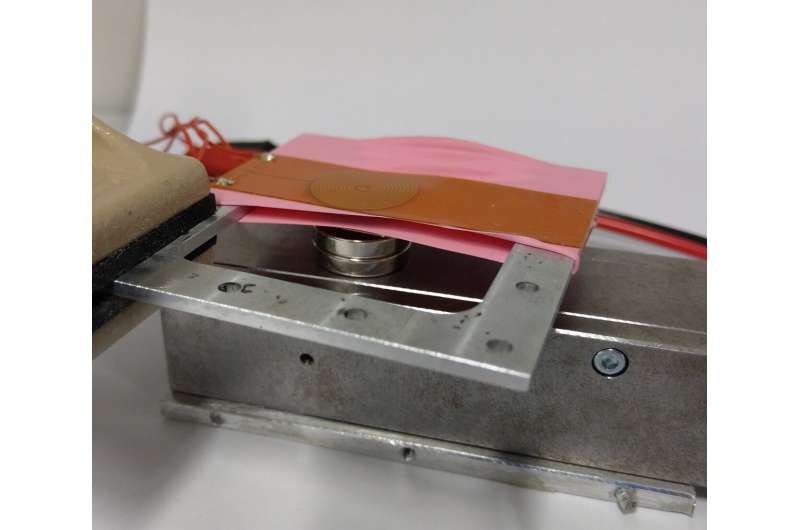This article has been reviewed according to Science X's editorial process and policies. Editors have highlighted the following attributes while ensuring the content's credibility:
fact-checked
proofread
Small membrane fan cools electronic devices efficiently and saves energy

Computers, cell phones, and other electronic devices require active cooling to prevent overheating. Typically, devices in the entertainment industry and power electronics are cooled by directing an airflow to specific areas. However, commonly used radial or axial fans are often too large and noisy.
As fan blades decrease in diameter, their ability to draw in air diminishes, creating limitations in size and performance. The high energy consumption and associated noise of these fans are significant drawbacks.
To address these issues, the Institute of Design and Production in Precision Engineering (IKFF) at the University of Stuttgart has developed a mini membrane fan that operates with low energy consumption and produces minimal noise. This innovative fan employs a targeted airflow to cool devices effectively while being energy-efficient.
The mini membrane fan features an exceptionally flat design with an excitation coil thickness of less than 180 µm, making it ideal for cooling power dissipators. It achieves a high air velocity of over 2.5 m/s, allowing effective cooling even at greater distances from the fan. The energy consumption ranges from only 25 to 75 mW.
Targeted ventilation is essential for compact devices containing internal heat sources, such as drives or power electronics. These devices are cooled through convection and heat conduction via directed airflow. Additionally, this cooling method is suitable for hotspot cooling in hard-to-reach areas of a device.
The membrane fan comprises a permanent magnet, two elastic membranes, and two opposing excitation coils attached to the membranes. When a sinusoidal current flows through the coils, the membranes are alternately pulled downwards and upwards, causing the membrane opening to open and close, resulting in a forward airflow. This design produces minimal noise, eliminating the typical fan noise (less than 30 dBA).
The flexible design of this electrodynamic system allows for direct application of the coils to the membrane, enabling a very flat installation. If the membranes are made of magnetic foils, the fan's service life is extended during continuous operation.




















